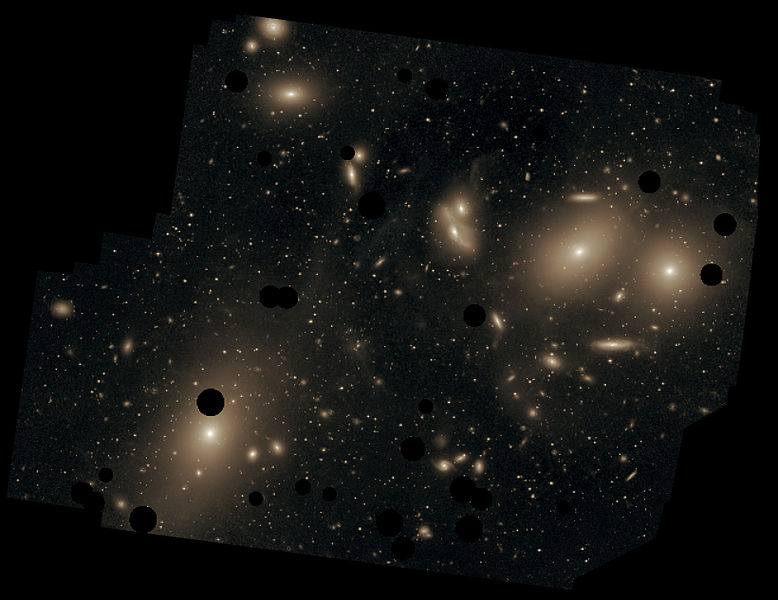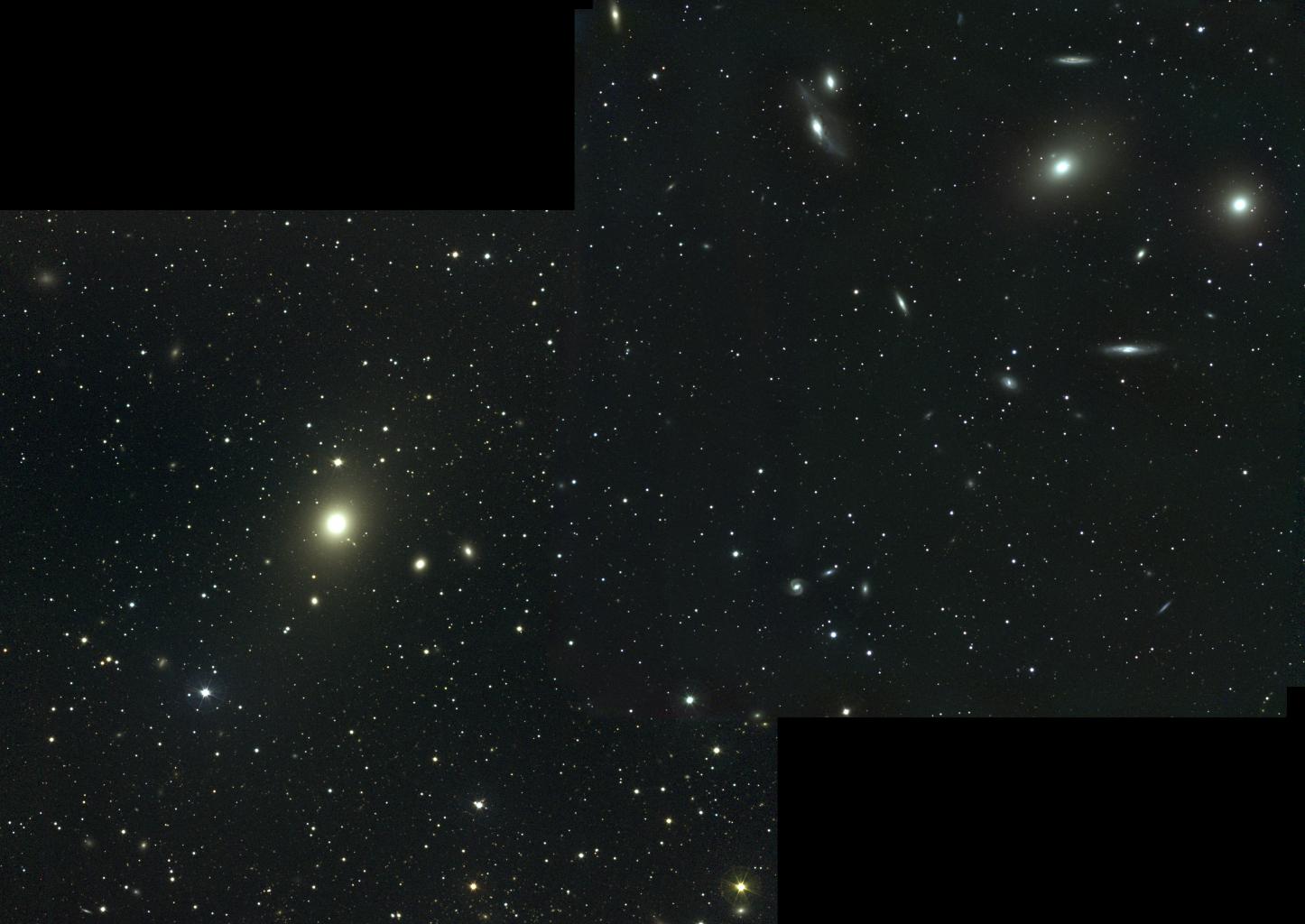
Image 1 Caption: "This deep image (i.e., very long-exposure image) of the Virgo Cluster (obtained by Chris Mihos and his colleagues using the Burrell Schmidt Telescope) shows the diffuse light between the galaxies belonging to the galaxy cluster. North is up, east to the left. The dark spots indicate where bright foreground stars were removed from the Image 1. (i.e., they are masked out). The cD galaxy (AKA supergiant elliptical galaxy) M87 (NGC 4486) is the largest galaxy in the picture (lower left)." (Slightly edited.)
Features:
- Image 1 shows only a part of the
Virgo Cluster.
- The Virgo Cluster
straddles the
constellations
Virgo and
Coma Berenices (Berenice's Hair)
(the only
IAU designated constellation
named for a historical person
or at least their hair:
Queen
Berenice II of Egypt (267/266--221 BCE)).
It is the nearest RICH galaxy cluster.
- Virgo Cluster:
- has its center of mass (believed to be near M87) at distance 16.5(1) Mpc.
- contains about 1300 to maybe 2000 galaxies.
- has mass of 1.2*10**15 M_Sun (counting dark matter) out to 2.2 Mpc from the center of mass.
- has a shape that is a prolate filament about 4 times longer than it is wide (see Wikipedia: Virgo Cluster: Characteristics).
- has a characteristic radial velocity of ∼ 1300 km/s assuming again the center of mass is near M87 which has radial velocity 1307(7) km/s.
- has a characteristic radius of ∼ 2.2 Mpc.
- subtends 8° on the sky in its longest direction.
- is a Bautz-Morgan Type III galaxy cluster meaning that it has NO dominant cD galaxy---but it does have at least one cD galaxy, M87.
- The Virgo Cluster
is part of the
Virgo Supercluster
which also contains the Local Group
which contains the Milky Way.
- The blueness of the
spiral arms
of spiral galaxies
is NOT enhanced in Image 1.
Maybe the image makers did NOT include the
blue
light.
- Near the upper right center of Image 1, there
is a pair of interacting galaxies.
You can tell by the distortion from flatness of the
galactic disk of one of them.

Image 2 Caption: Image 2 is of almost the same part of the Virgo Cluster as shown in Image 1 above.
The Image 2 creators have NOT masked out the bright foreqround stars, but have made the image in such a way that they are NOT glaring. They still appear as pointy stars if you click on the image and look closely.
Image 2 may be approximately true color, but it does NOT seem to have the blue of the spiral galaxies enhanced to be obvious.
- Images:
- Credit/Permission: ©
Chris Mihos
(Case Western Reserve University)/ESO,
2009
(uploaded to Wikimedia Commons
by User:Luiscalcada,
2010) /
Creative Commons
CC BY-SA 3.0.
Image link: Wikimedia Commons: File:ESO-M87.jpg.
- Credit/Permission: ©
NOAO,
AURA,
NSF,
1997 /
NOAO/AURA Image Library Conditions of Use.
Download site: NOAO: Cluster of galaxies in Virgo. Image link: Itself.
File: Galaxies file: galaxy_cluster_virgo.html.